Abstract
The sense of smell of 106 alkaline battery workmen exposed at their work to cadmium and nickel dust has been compared with a control group of 84 men matched for age. The battery workers reported significantly more anosmia than the controls (15% to zero) and did less well in the phenol smelling test (27·3% to 4·8%). Cadmium proteinuria was found in 17 of the battery workers, 11 of whom showed virtual anosmia. Figures of recent concentrations of cadmium and nickel in the atmosphere are given. The noses of 85 battery workers and 75 controls were examined. Signs of non-specific chronic irritation were more frequent in the battery workers but no significant relationship was established between this appearance and the presence of anosmia. It is concluded that the anosmia is due to exposure to cadmium or nickel dust or a mixture of the two.
Full text
PDF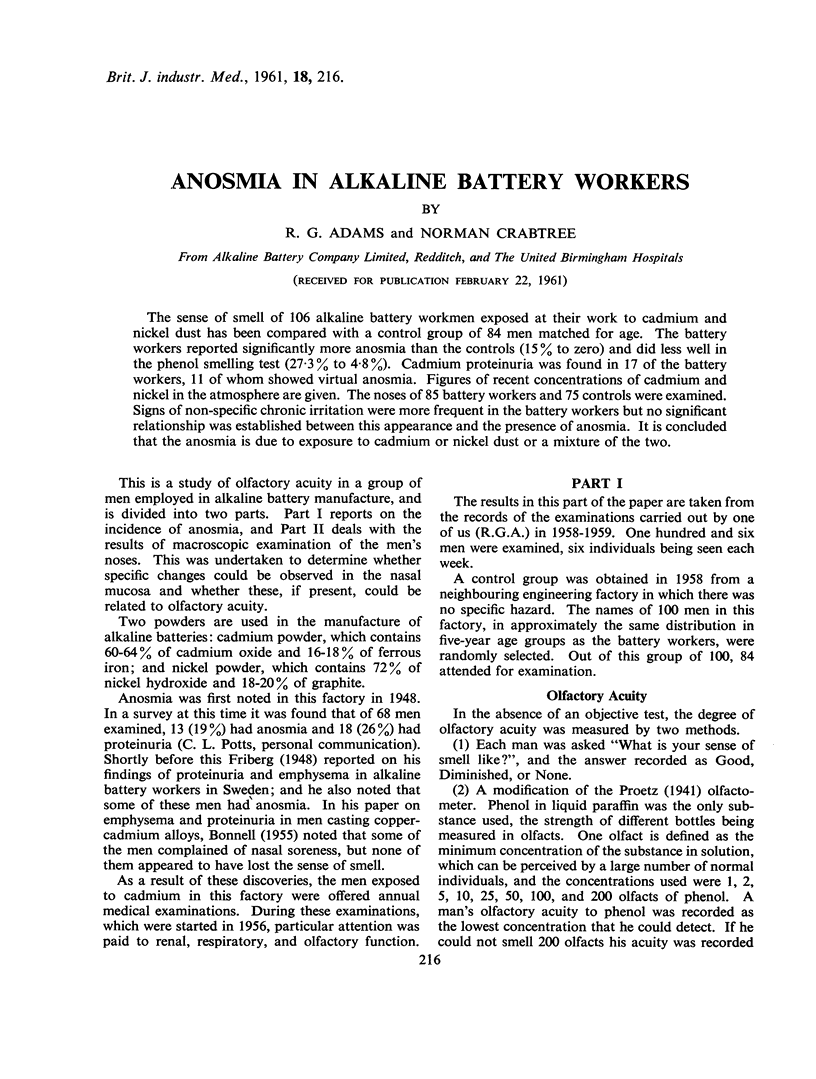
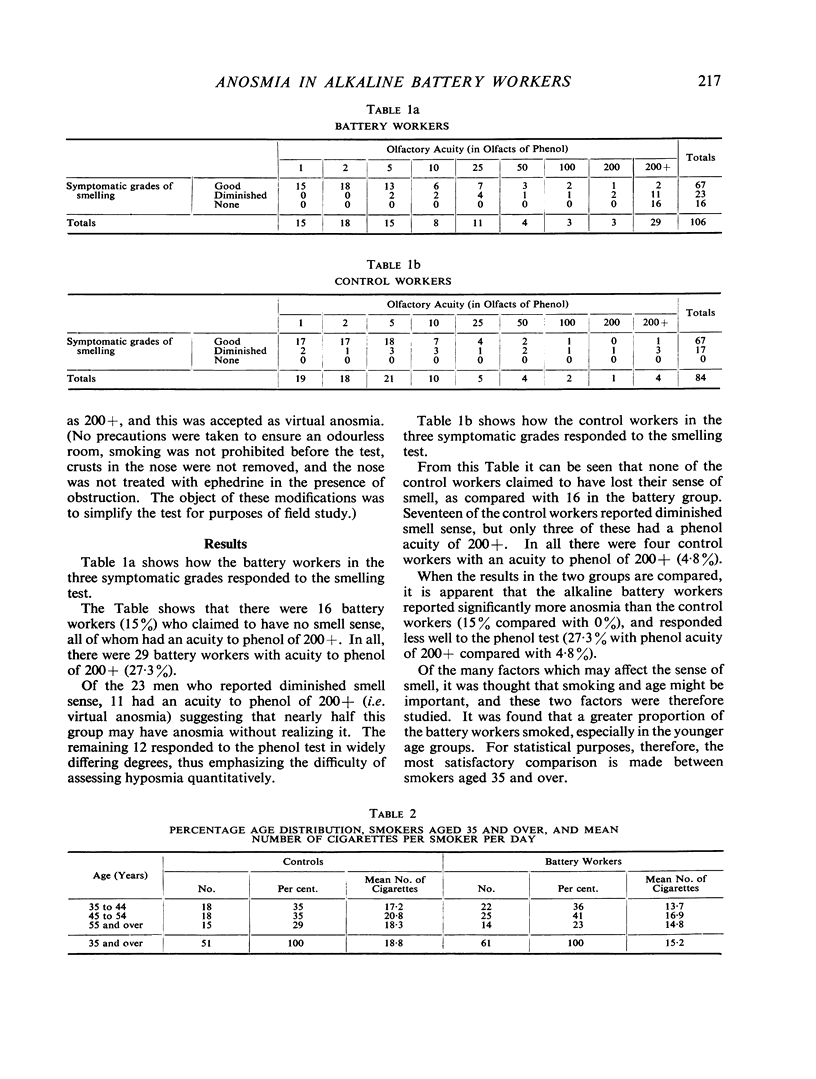
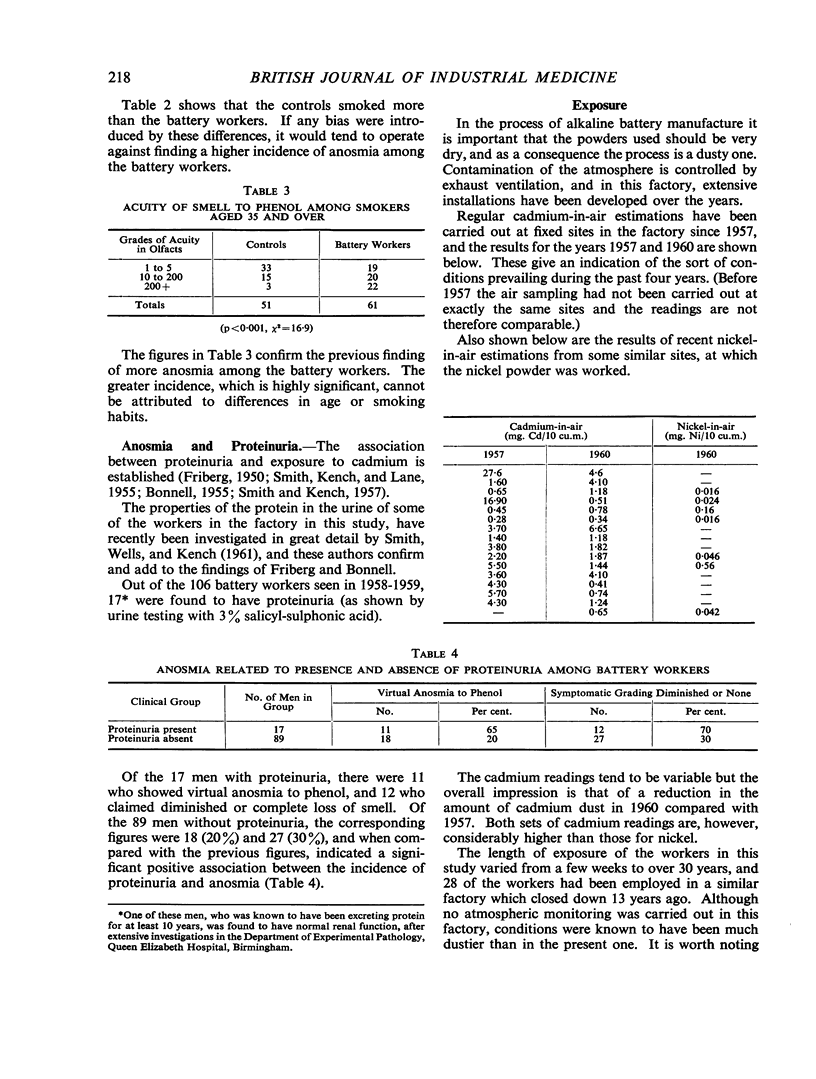
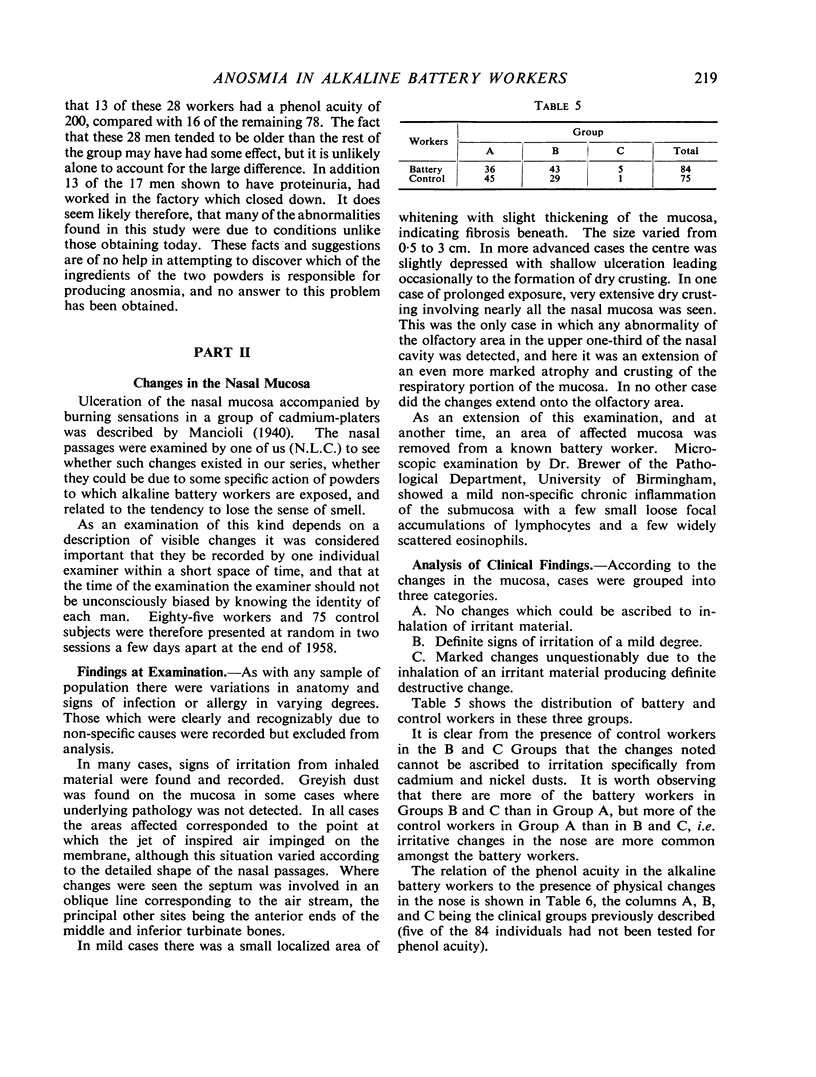
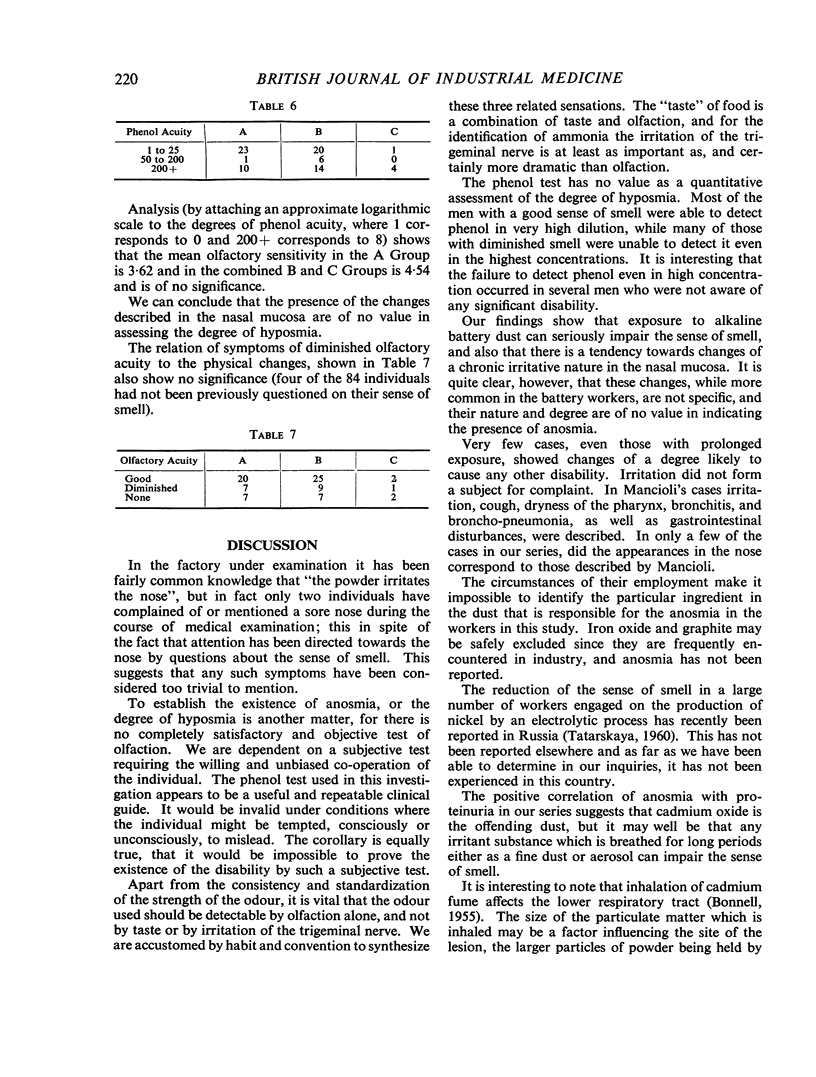
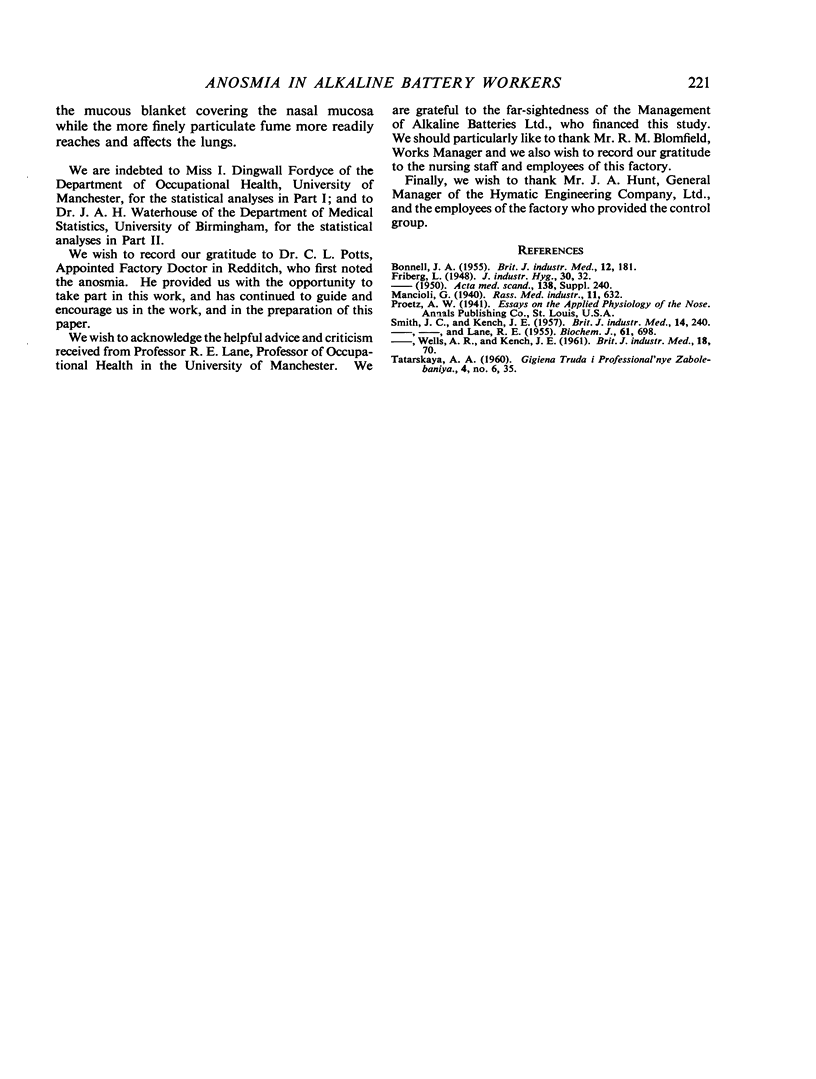
Selected References
These references are in PubMed. This may not be the complete list of references from this article.
- BONNELL J. A. Emphysema and proteinuria in men casting copper-cadmium alloys. Br J Ind Med. 1955 Jul;12(3):181–195. doi: 10.1136/oem.12.3.181. [DOI] [PMC free article] [PubMed] [Google Scholar]
- SMITH J. C., KENCH J. E., LANE R. E. Determination of cadmium in urine and observations on urinary cadmium and protein excretion in men exposed to cadmium oxide dust. Biochem J. 1955 Dec;61(4):698–701. doi: 10.1042/bj0610698. [DOI] [PMC free article] [PubMed] [Google Scholar]
- SMITH J. C., KENCH J. E. Observations on urinary cadmium and protein excretion in men exposed to cadmium oxide dust and fume. Br J Ind Med. 1957 Oct;14(4):240–245. doi: 10.1136/oem.14.4.240. [DOI] [PMC free article] [PubMed] [Google Scholar]


